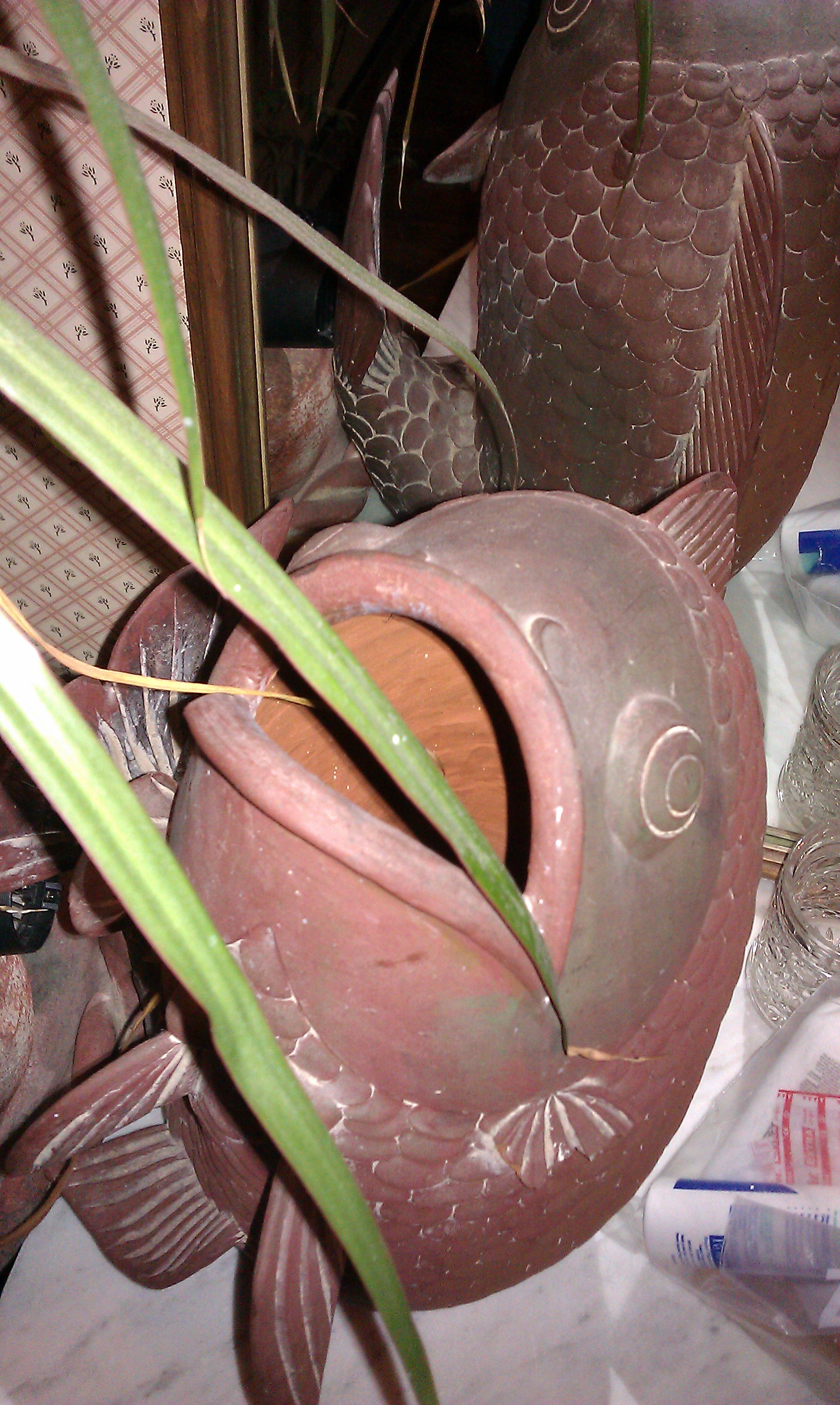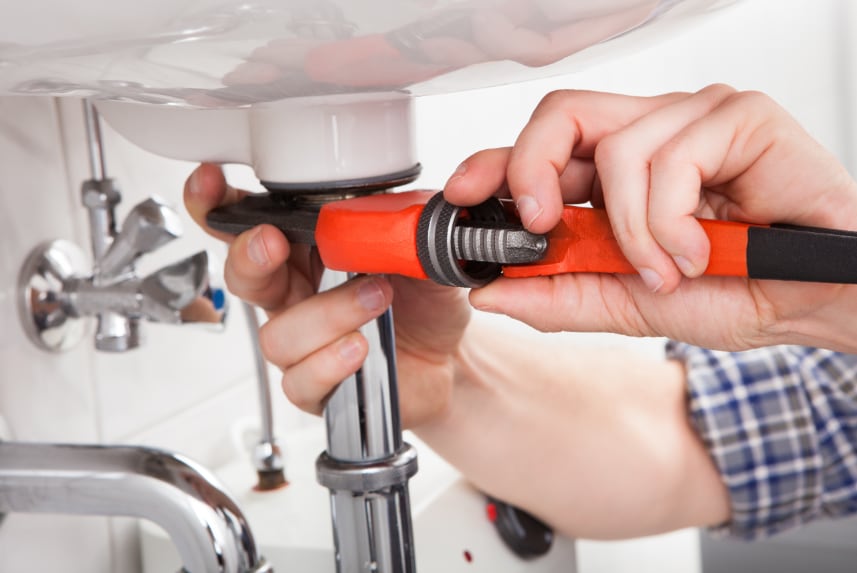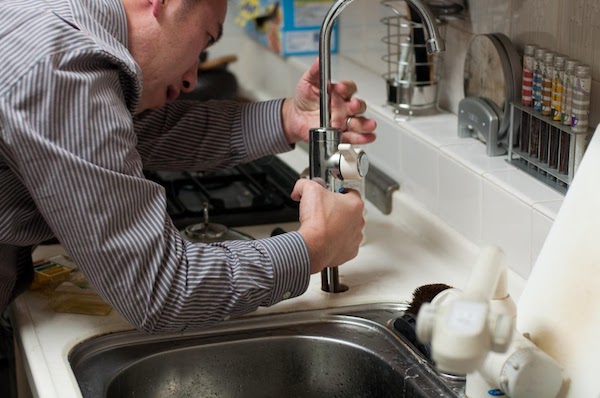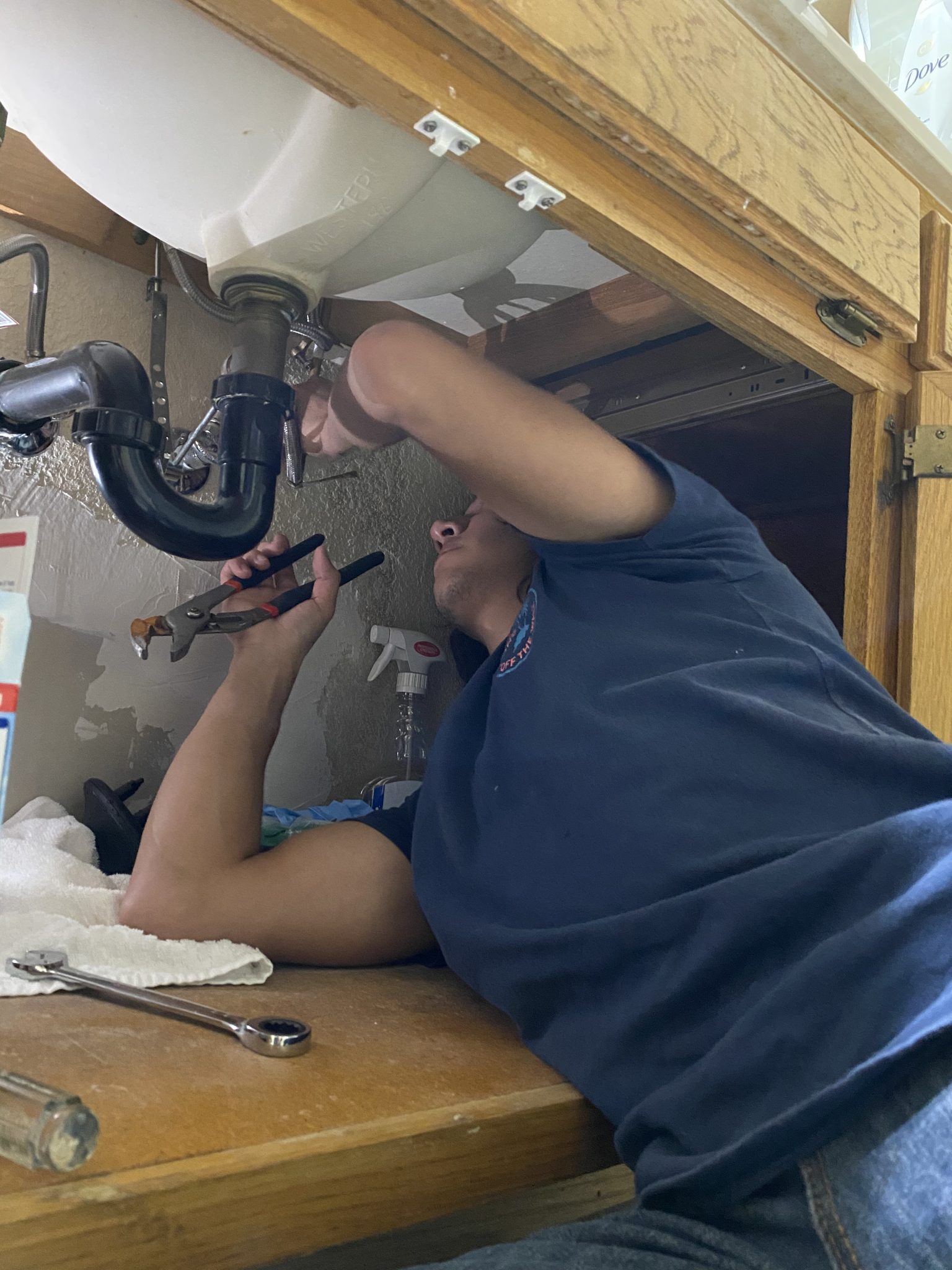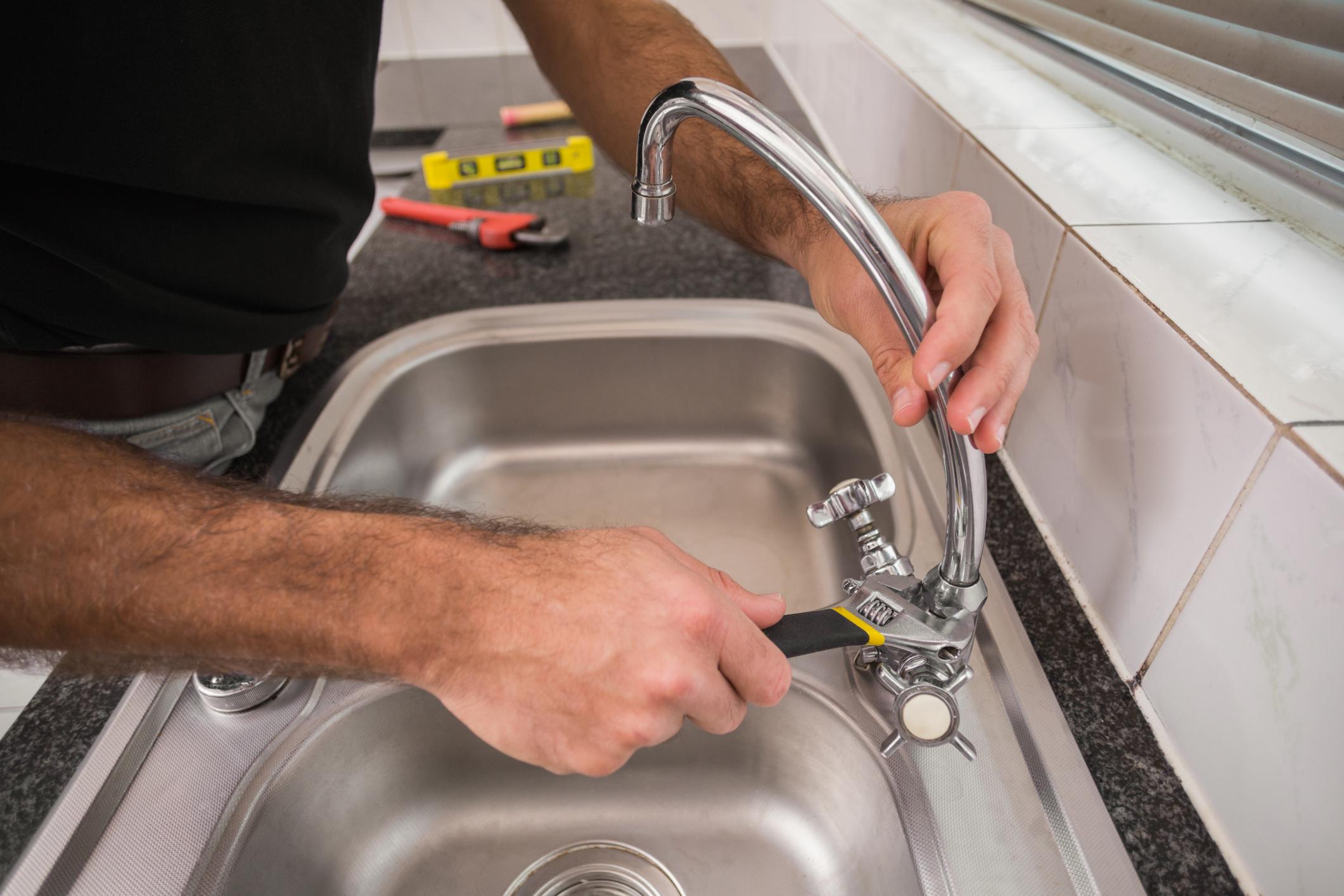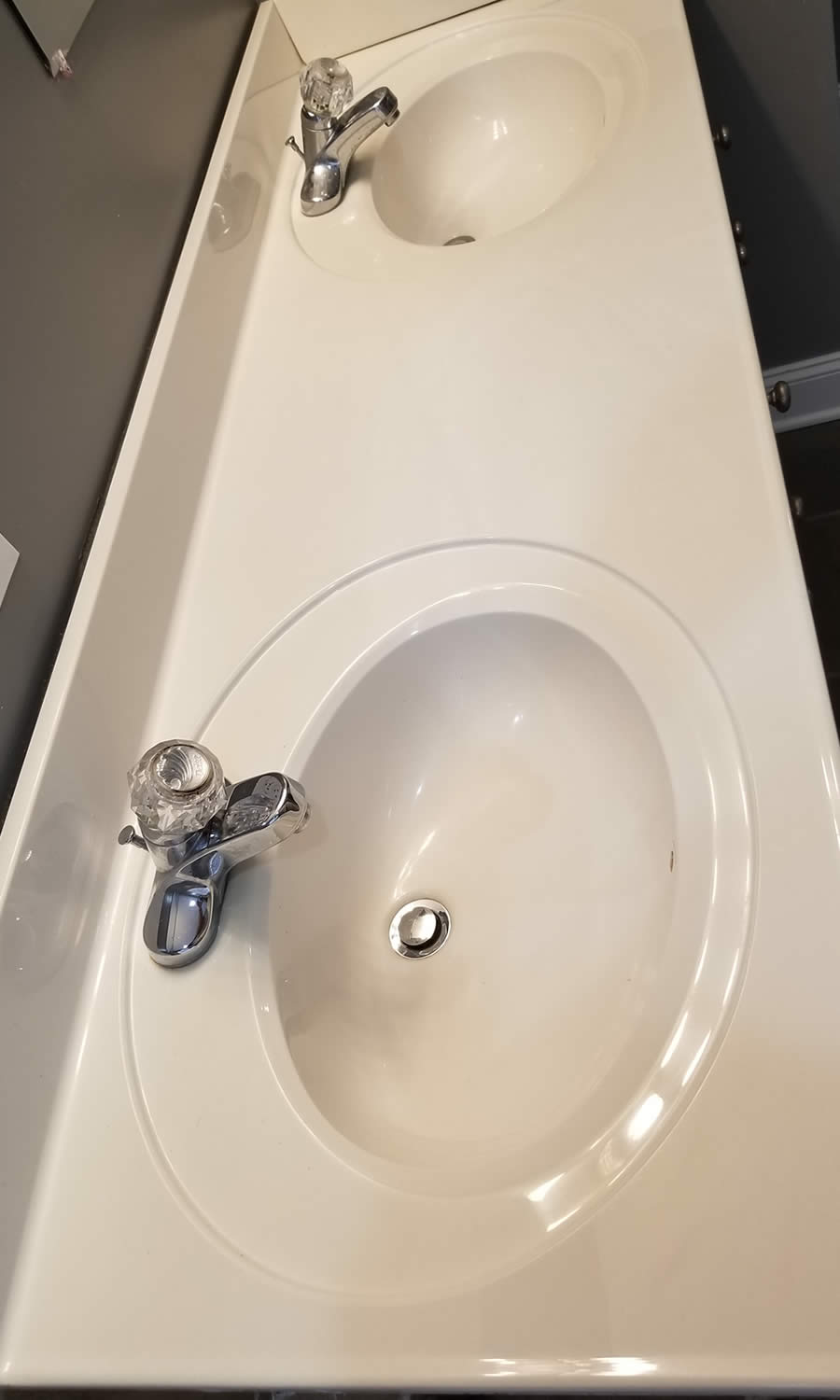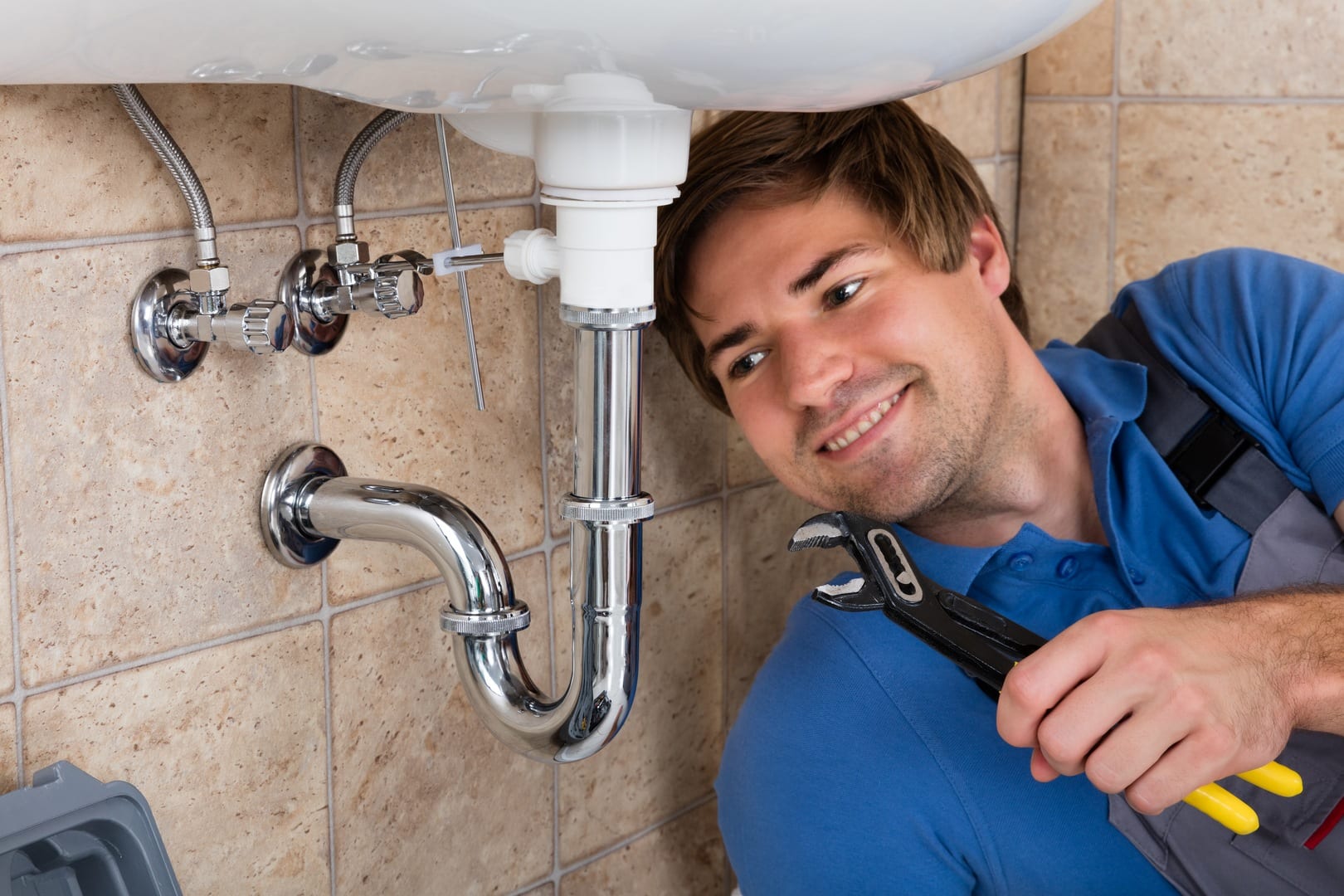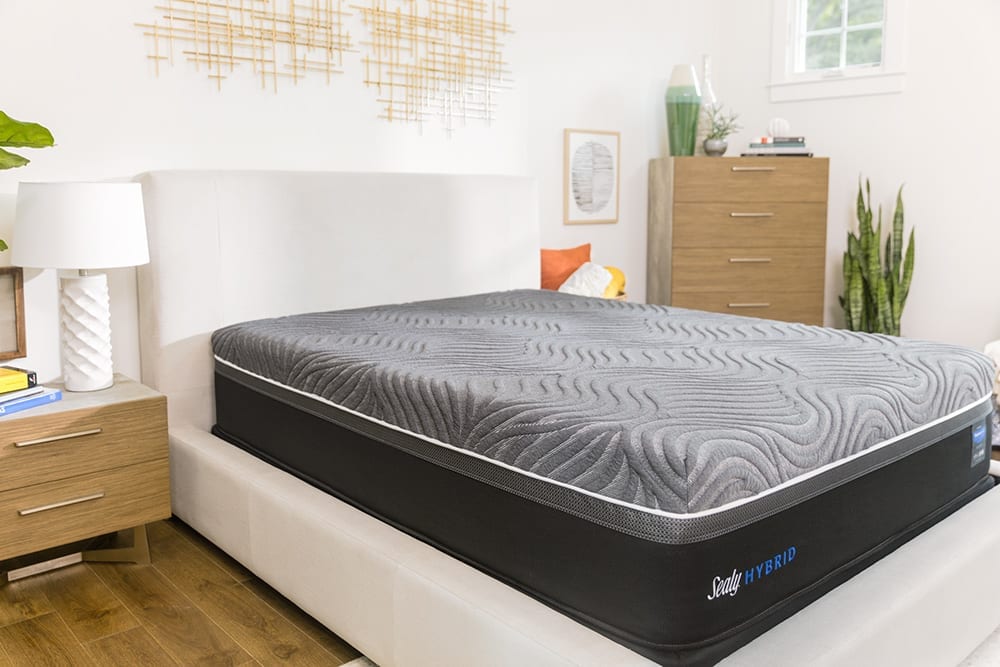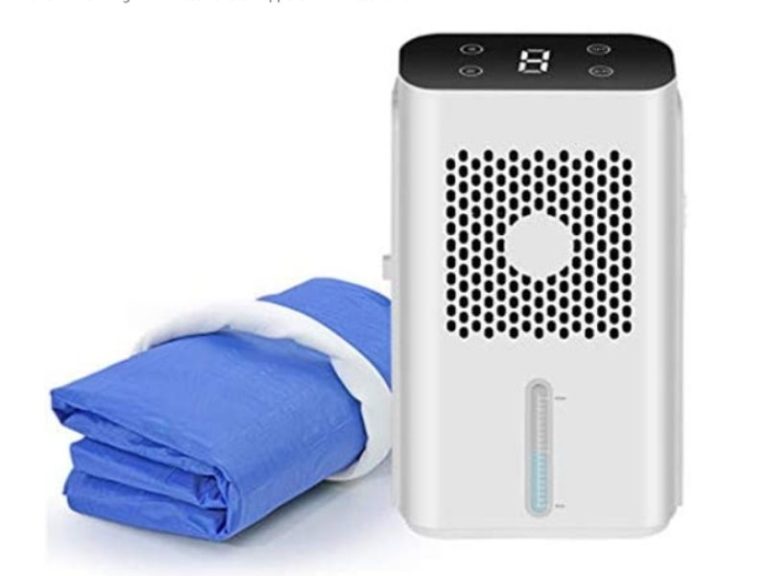Is your bathroom sink constantly dripping? Not only is it annoying, but it can also lead to a higher water bill. Don't worry, you don't have to call a plumber just yet. With our step-by-step video tutorial, you can learn how to fix a leaky bathroom sink on your own. So put on your DIY hat and let's get started! To start, gather adjustable pliers, replacement washers, and plumber's tape. Turn off the water supply by closing the valves under the sink. Then, use the pliers to unscrew the faucet handle and remove it. Next, unscrew the stem and take out the old washer. Replace it with a new one and secure the stem back in place. Finally, reattach the faucet handle and turn the water supply back on. Voila! No more leaky sink. Video Tutorial: How to Repair a Leaky Bathroom Sink
A clogged bathroom sink can be a major inconvenience, but it's a common problem that can easily be fixed on your own. Before reaching for harsh chemicals, try using a plunger to unclog the drain. If that doesn't work, you can also use a plumbing snake to remove any debris or hair that may be causing the blockage. For a more natural solution, mix baking soda and vinegar and pour it down the drain. Let it sit for a few minutes before flushing with hot water. With these simple DIY methods, your sink will be back to draining properly in no time. DIY: Fixing a Clogged Bathroom Sink
Whether it's a leaky faucet or a clogged drain, knowing how to repair your bathroom sink can save you time and money. Our step-by-step guide breaks down the process for you, making it easy to follow and understand. From identifying the problem to gathering the necessary tools and materials, we've got you covered. Say goodbye to calling a plumber and hello to fixing your sink like a pro. Step-by-Step Guide for Bathroom Sink Repair
Are you experiencing issues with your bathroom sink but not sure what the problem is? Don't worry, we've compiled a list of the most common bathroom sink problems and how to fix them. From a loose faucet to a slow-draining sink, we've got solutions for all your sink woes. So before you panic and call a plumber, check out our guide for some quick and easy fixes. Common Bathroom Sink Problems and How to Fix Them
When it comes to bathroom sink repair, sometimes the simplest solutions are the most effective. That's why we've gathered some quick and easy tips to help you tackle common sink problems. For example, did you know that you can use a toothbrush and toothpaste to clean mineral deposits off your faucet? Or that you can use WD-40 to loosen a stuck drain stopper? These tricks and more can save you time and money on repairs. Quick and Easy Bathroom Sink Repair Tips
Not all bathroom sink problems have a straightforward solution. That's where troubleshooting comes in. Our guide will walk you through the steps of identifying the issue and finding the root cause. Is your sink leaking from the base? The drain? The faucet? We'll help you pinpoint the problem and provide tips on how to fix it. Don't let a pesky sink problem get the best of you, troubleshoot your way to a solution. Troubleshooting: Bathroom Sink Repair
While some bathroom sink repairs can be easily done on your own, there are some instances where it's best to call in the professionals. If your problem is more complex, such as a major leak or a broken pipe, it's important to seek help from a licensed plumber. They have the experience, tools, and knowledge to handle any sink repair job. Plus, you won't have to worry about making a mistake and causing more damage. Professional Bathroom Sink Repair Services
Before attempting any bathroom sink repair, it's important to have the right tools and materials on hand. This will save you time and frustration in the long run. Some essential items include wrenches, screwdrivers, plumbers putty, and plumbing tape. Our guide will provide a comprehensive list of everything you'll need for different types of sink repairs, so you can be prepared for any situation. Bathroom Sink Repair: Tools and Materials You'll Need
If your bathroom sink drain is constantly clogging or leaking, it may be time for a replacement. Don't worry, it's a simple process that you can easily do yourself. Start by removing the old drain and cleaning the area. Then, apply plumber's putty to the new drain and insert it into the sink. Tighten the drain in place and wipe off any excess putty. Finally, reconnect the water supply and test the new drain. It's that easy! How to Replace a Bathroom Sink Drain
The best way to avoid bathroom sink repairs is to prevent them in the first place. Regular maintenance and proper usage can go a long way in keeping your sink in good condition. Simple tasks like using a drain stopper and avoiding pouring grease down the drain can prevent clogs. Also, keep an eye out for any leaks or drips and address them promptly. By taking care of your sink, you can save yourself from future repairs and expenses. Preventing Future Bathroom Sink Repairs
The Importance of Proper Bathroom Sink Repair
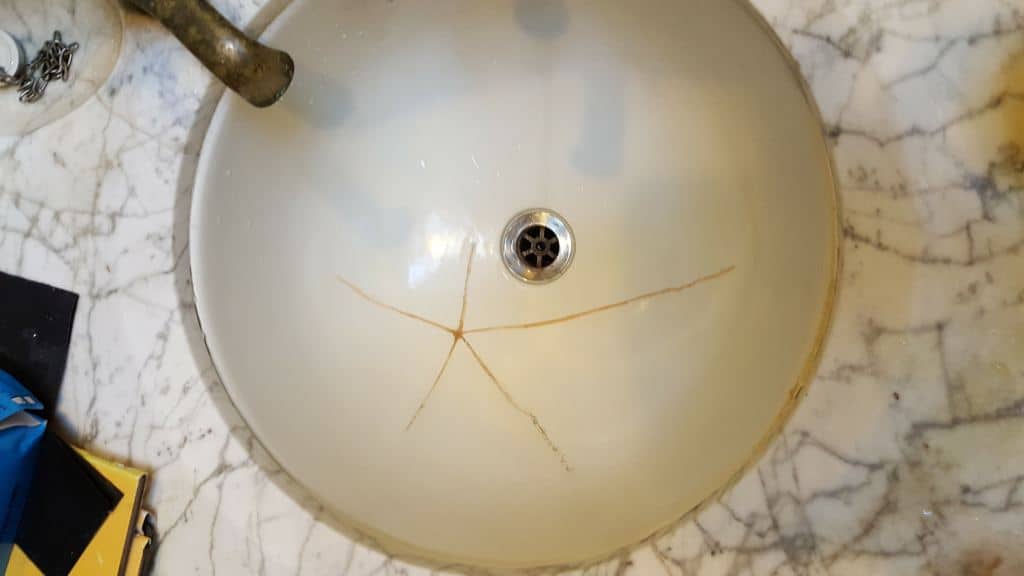
The Importance of Regular Maintenance
Preventing Water Damage
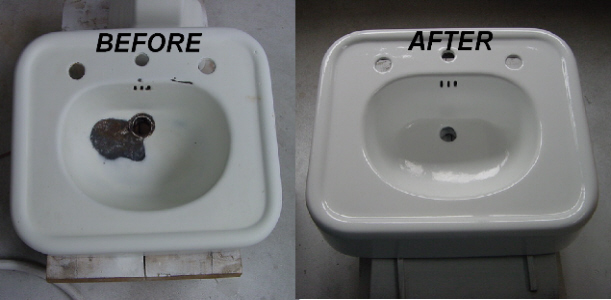 A malfunctioning bathroom sink can cause water damage to your bathroom and potentially other areas of your house. Leaking pipes or a clogged drain can lead to water pooling on your bathroom floor, which can seep into the walls and cause mold growth. This not only damages the structure of your house, but it can also be a health hazard for you and your family. By regularly repairing and maintaining your bathroom sink, you can prevent these issues from occurring and save yourself from costly repairs in the future.
A malfunctioning bathroom sink can cause water damage to your bathroom and potentially other areas of your house. Leaking pipes or a clogged drain can lead to water pooling on your bathroom floor, which can seep into the walls and cause mold growth. This not only damages the structure of your house, but it can also be a health hazard for you and your family. By regularly repairing and maintaining your bathroom sink, you can prevent these issues from occurring and save yourself from costly repairs in the future.
Improving Aesthetics
 Aside from the practical reasons, proper bathroom sink repair also helps improve the overall aesthetics of your bathroom. A damaged or outdated sink can be an eyesore and detract from the overall design of your bathroom. By repairing or replacing your sink, you can upgrade the look of your bathroom and create a more inviting and pleasant space. This is especially important if you are looking to sell your house, as a well-maintained bathroom can significantly increase its value.
Aside from the practical reasons, proper bathroom sink repair also helps improve the overall aesthetics of your bathroom. A damaged or outdated sink can be an eyesore and detract from the overall design of your bathroom. By repairing or replacing your sink, you can upgrade the look of your bathroom and create a more inviting and pleasant space. This is especially important if you are looking to sell your house, as a well-maintained bathroom can significantly increase its value.
DIY vs Professional Repair
 While there may be some minor repairs you can do yourself, it is always best to hire a professional for more complex bathroom sink repairs. They have the necessary skills, knowledge, and tools to properly fix any issues and ensure the longevity of your sink. Attempting to fix a sink without the proper expertise can lead to further damage and potentially cost you more in the long run. By investing in professional repairs, you can have peace of mind knowing your bathroom sink is in good hands.
In conclusion, proper bathroom sink repair is essential for maintaining the functionality, aesthetics, and value of your house. Regular maintenance and timely repairs can prevent water damage, improve the overall look of your bathroom, and save you from costly repairs in the future. Don't hesitate to hire a professional for any bathroom sink issues and keep your bathroom in top condition.
While there may be some minor repairs you can do yourself, it is always best to hire a professional for more complex bathroom sink repairs. They have the necessary skills, knowledge, and tools to properly fix any issues and ensure the longevity of your sink. Attempting to fix a sink without the proper expertise can lead to further damage and potentially cost you more in the long run. By investing in professional repairs, you can have peace of mind knowing your bathroom sink is in good hands.
In conclusion, proper bathroom sink repair is essential for maintaining the functionality, aesthetics, and value of your house. Regular maintenance and timely repairs can prevent water damage, improve the overall look of your bathroom, and save you from costly repairs in the future. Don't hesitate to hire a professional for any bathroom sink issues and keep your bathroom in top condition.

